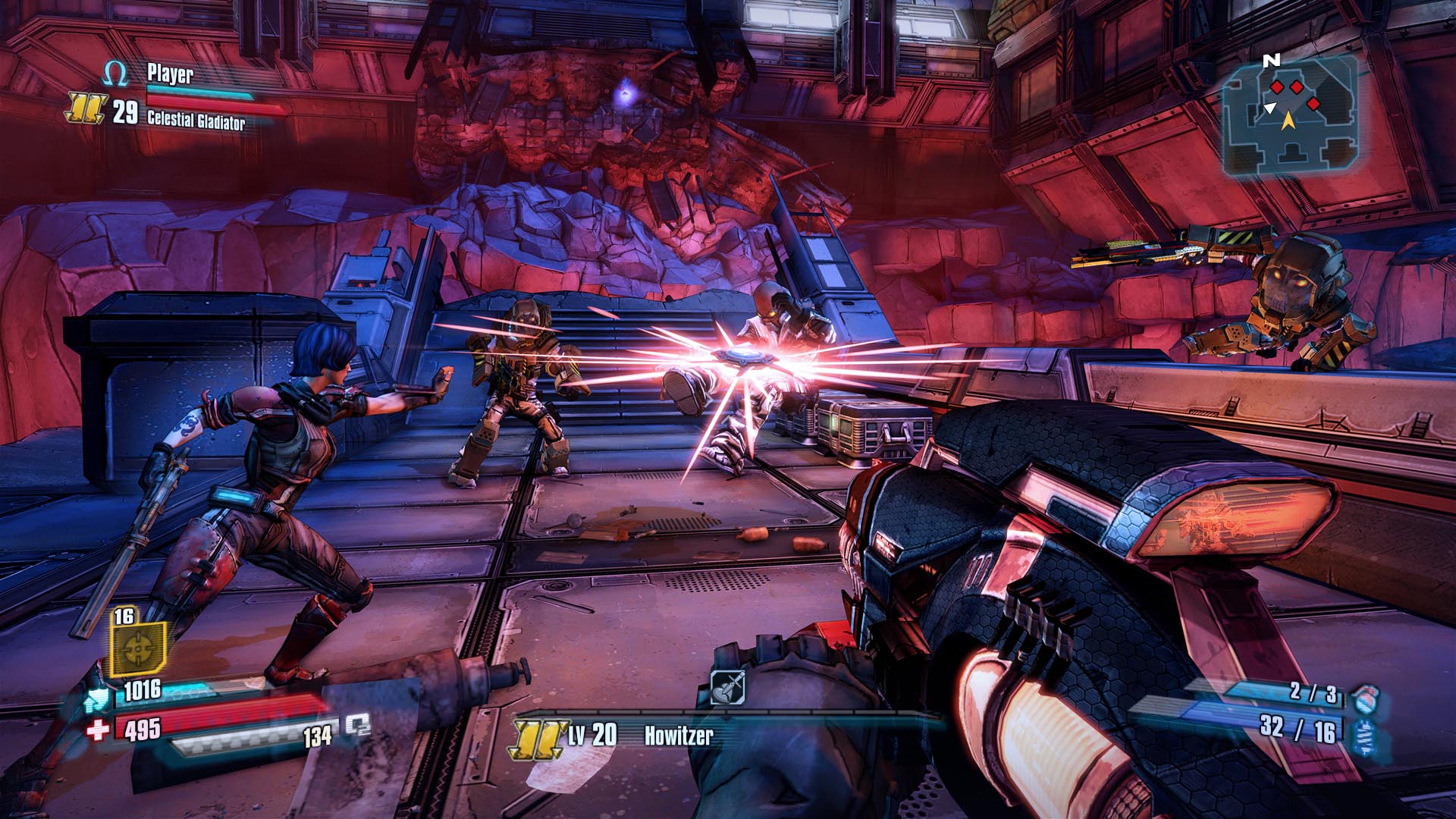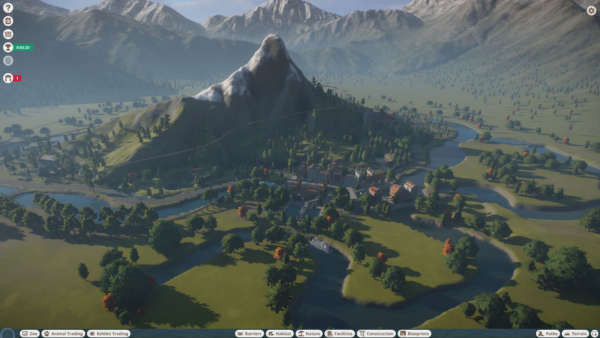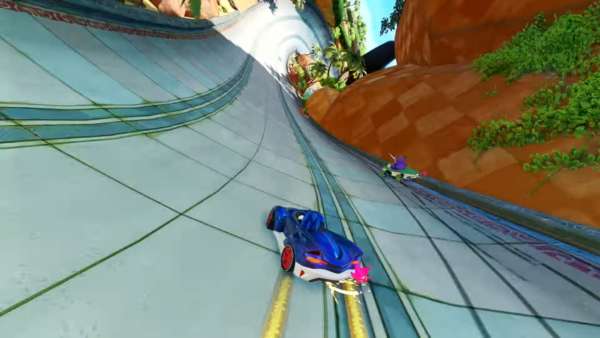Do you remember that film when you were a teenager? The one which everyone saw and became obsessed over for a short while? The one which you still quote today with your inner circle? Well, that is what Borderlands: The Pre-Sequel is; the belated sequel to that film, the Anchorman 2 of gaming. For those too young to remember when the original Anchorman came out, that was short-hand for safe, samey and occasionally boring.
My primary annoyance is that Borderlands 2 was a good leap forwards from the original. It smoothed down the bumps and filled the crevices of the originator’s design, as well as adding a killer sense of humour. Borderlands: The Pre-Sequel’s additions can be summed up with jetpacks, accents and grind. It digs up a few of those concrete covered holes, or perhaps those are just the cut corners?
I don’t mean to sound overly negative. The same loop of kill, loot, equip, repeat is still intact, augmented by new laser weapons, another status effect and a distinct lack of earth-type gravity. Cool, right? Well, kind of. Shortly after arriving on Elpis, the moon of Pandora that taunted you with possibility throughout Borderlands 2, you find out you lack the oxygen to really do anything. After acquiring a helmet, you also gain the ability to expend previous oxygen to boost upwards, or more aptly, a double jump. With this comes a nifty butt stomp, semi-gliding capabilities and more freedom to explore the landscape.
“New” enemy types are primary carry overs from Borderlands 2 DLC
2K Australia do a good job of incorporating this change in mobility into the level design. Low-gravity leaps over burning pits of lava is the new norm, as well as a healthy injection of verticality. Missions generally send you to abstract areas of scattered machinery and rock outcrops. Bounding about these small areas is much more enjoyable than staying nailed to the floor. It would just be more fun if the environments in between these bright spots didn’t meld into one another.
Grey is pretty boring, and Elpis is mostly grey plains. Understandable as a dusty moon, but there I little excitement to be found, bopping over indistinct moon rock #3639. Where are the fields of purple goop, bright desert towns or the irradiated factories? Floating above you, out of reach on Pandora. Instead you are stuck below, muddling through this purgatory of colour as you meander to the next mission marker. The two vehicles (a moon buggy and a hover-cycle that allows you to slam down on enemies) keep things going, but spawn points are placed too conservatively, sometimes making a trip 4 minutes of walking and 30 seconds of driving. Revisiting the Hyperion space station is nice for regular breaks in tedium, but they feel like a cold slap in the face to make sure you are still awake.
This is an issue that Borderlands: The Pre-Sequel suffers from overall, tedium punctuated with stand-out moments. Travel is a slog, except for the jetpack. Eplis is visually uninteresting and dull between major landmarks, but fun to explore once you get there. Combat is the same but lasers and butt stomps add a touch of violent flair. The four new Vault Hunters are a mixed bag. Nisha deals justice with auto-targeting duel revolvers. Athena absorbs damage to throw it back at enemies. Wilhelm flings out two drones, one dealing damage and another topping up his shield. Fragtrap is more interesting, gifting him with a random ability from a slowly growing bag of tricks. Your mileage may vary depending on your enjoyment of the character, but it goes a long way to keep fights fresh and interesting. As always, the real meat is found in the talent trees, so one Wilhelm may be a walking death fortress, kept alive by one turret whilst the other reins death. Another however, slowly turns more robotic, replacing body parts to gain new abilities. It is business as usual, but Gearbox have always been good at making ability trees.
Laser beams come in shotgun, beam and rifle flavours, making it a jack of all trades and master of everything
The one area that Borderlands: The Pre-Sequel shines is the story. For a title where the story could possibly me little given its nature as a sidestory, sequel thingy, learning the origins of Handsome Jack, the history of Hyperion and fills in many of the blanks. It’s a well paced romp, one that does a great job at framing many fan favourite characters and the series narrative as a whole. A small but enjoyable touch is that the vault hunters are no longer silent vessels of carnage. Wilhem, Athena, Nisha and Claptrap now converse, agree and object. It is a relatively small step forward, but it’s one that adds a lot to the the Borderlands universe.
Taking twenty hours or so to see most of the content, it is a touch on the “short” side for a Borderlands game. This isn’t helped when most of it outside of the main story feels like padding. Side-content isn’t lacking in quantity, but quality is woefully short. Go here, kill this, collect a thing, meh. Between these are more imaginative ventures, like landing an epic slam dunk while on fire.
Borderlands: The Pre-Sequel is Gearbox running out the clock, giving themselves more time to come up with ideals for Borderlands 3: The After-Sequel-Experience (or whatever it will be called). 2K Australia have not done a bad job, but everything new and fun is hidden within a tapestry of mediocrity, letting you grind away while your mind wonders to different things. Did I leave the backdoor open? Can I eat my own fist? Is Borderlands: The Pre-Sequel good? Well, yes. You just have to hunt for the diamonds in the rough.





